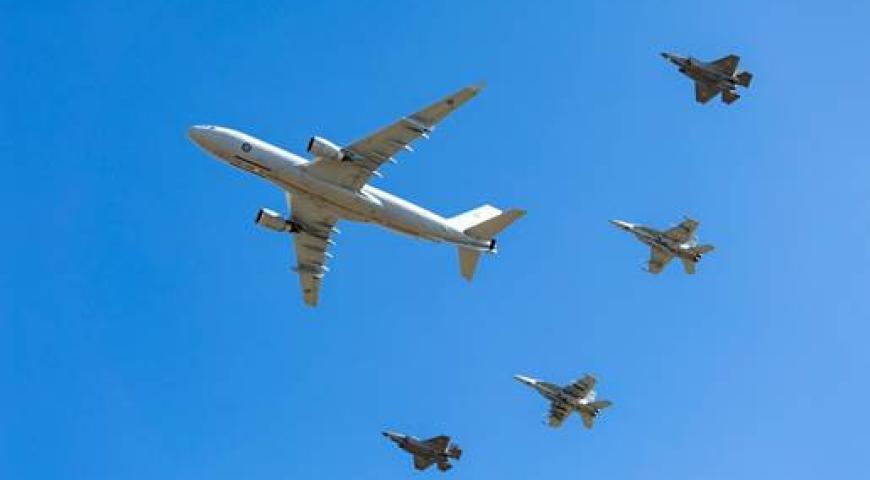The current Joint Mission Analysis Process (JMAP) rests on an assumption that is fundamentally flawed.
That flaw is the belief we can predict adversary behaviour in warfare, and thus shape our plan accordingly.
In the context of the JMAP, the assumption of prediction has the sheen of logic through pseudo-science. The JMAP is built upon Intelligence Preparation of the Operating Environment (IPOE), which guides planners through four steps: Define the Operating Environment, Describe the Operating Environment Effects, Evaluate the Adversary, and Assess Adversary Courses of Action. The IPOE is then updated as a running estimate, enabling planners to develop individual courses of action (COA) for the supported commander that reflect the dynamic battlefield.
But is this really the case?
Lacking a complete intelligence picture, planners make a series of assumptions. These are based around an assessment of, or a guess at, the adversary plan. Within these assumptions nest a series of unanswered questions that relate to ‘intent’. Some planners recognise this and task their intelligence team to develop a collection plan to fill intelligence gaps. But this, in turn, rests on another false assumption — that adversary intent matches our expectation of their behaviour, and that confirming our expectations is the same as understanding their intent. Other planners may ignore the question of intent, lacking detailed biographical data of individual adversary commanders. They choose to focus on predicting future behaviour by examining current activity, using current performance to define future behaviour. This assumes a linear progression of events, but the stock market proves that since the time of Adam Smith prior performance is no guarantee of future return.
Running through this is a consistent theme: it is impossible to predict human behaviour and decision-making. Warfare is no different. Clausewitz wrote that:
The degree of force that must be used against the enemy depends on the scale of political demands on either side. These demands, so far as they are known, would show what efforts each must make; but they seldom are fully known . . . . Nor are the situation and conditions of the belligerents alike. This can be a second factor . . . . Just as disparate are the governments’ strength of will, their character and abilities . . . . These three considerations introduce uncertainties that make it difficult to gauge the amount of resistance to be faced and, in consequence, the means required and the objectives to be set.
Reason in war is seldom seen and often mistaken. To truly define an enemy’s operational course of action, one needs a team of strategic analysts cataloguing all elements of an adversary’s national power and decision-making ability. Prior to hostilities, the planners and commander would spend countless hours researching and wargaming potential outcomes, examining moves and counter-moves. In the modern context, an arsenal of intelligence, surveillance, and reconnaissance systems would be deployed to record and monitor the adversary’s every move and eavesdrop on every conversation. We would truly know the enemy.
But we know this can never be the case.
War, states Clausewitz, can be compared to a game of chance, a gamble, and thus ‘guesswork and luck come to play a large part in war’. How then, do we minimise the guesswork and luck in staff work during joint planning, and define a realistic adversary course of action? The answer is to establish a framework of knowledge that defines our expectations of enemy behaviour. This can be achieved by asking three main questions during the development of an adversary course of action.
1. The Question of Capability
The question of capability asks “what do we think the enemy is capable of doing?” Answers to this question are derived from descriptive intelligence, such as adversary ORBAT, physical location, and observable signatures. Descriptive intelligence allows us to characterise adversary equipment and networks, which can then be aligned with an estimate of capability: what is the combined performance of enemy weapon systems, such as a combat team or strike fighter squadron. Defining capability establishes the facts (or best estimate of the facts) without introducing alternatives or theories. This is the question that should be answered using Step Three of the IPOE, but often stalls at descriptive intelligence, listing facts and figures and expecting the planners or commander to make their own decisions on capability.
2. The Question of Intention
The question of intention asks “what do we think the enemy wants to do?” While this may sound identical to defining a COA, what we seek to define here is the difference between a broad COA and a tactic. If an adversary chooses to fight there are only four broad COAs available: attack, defend, harden or avoid. At the campaign level it is difficult to do more than one COA simultaneously – although at the strategic level it may be feasible. As a result, asking the question of what the enemy intends to do (the COA) provides a framework on which we can identify possible tactics the enemy may employ to realise the endstate. A COA is always a strategy in that it employs ways and means to achieve an end; within a COA will be tactics and stratagems (the ways). It is commonplace to confuse a tactic with a course of action. However, it is essential to define the enemy’s overall intent because this allows us to bound the problem (ie, “they will attack”) and not attempt to describe all the possible tactics that may be employed to reach a desired endstate.
3. The Question of Environment
The question of environment asks “how do external factors shape what will happen?”. This should be answered in Step Two of IPOE but is usually misconstrued or not answered at all. Intelligence staff often focus on how physical terrain, weather, and factors such as political geography and physical infrastructure could influence decision-making, but fail to link this to capability and intention. A weapon system can function a certain way and it will be used a certain way. The environment present in all warfighting domains (air, land, maritime, space and information) will, in turn, shape how capability and intention interact.
The three questions can be visualised as counter-balancing forces. Clausewitz refers to the trinity of emotion, chance or reason (or people, army, government):
These three tendencies are like three different codes of law, deep-rooted in their subject and yet variable in their relationship to one another. A theory that ignores any one of them or seeks to fix an arbitrary relationship between them would conflict with reality to such an extent that for this reason alone it would be totally useless.
The relationships between capability, intention, and environment is a similar one — all are inter-related and influence each other, pulling in alternate directions like a magnetic pendulum.
Combining the three questions gives us an understanding of expectations. If the COA is the ends — what an enemy intends to do within the limits of capability and environment — then expectation is the ways and means, how they will achieve the intent. We can call this ‘expectation analysis’, which allows us to frame possible outcomes in war based on enemy action that is evidence-based to the fullest extent. Using expectation analysis — “this is what we think the enemy will do” — removes the determinism of COA development, with the observer bias and mirror-imaging inherent in ‘analysing’ an adversary COA.
In summary, the COA analysis step of the JMAP can be improved. We can’t predict the future, but we can understand capability and intention and place these in the context of the environment. This allows us to define our expectation of adversary behaviour, while making it clear to a commander it is what we think the enemy could do and why — our expectations. These expectations can be tested using empirical information within an adaptive wargame, where we may see a range of behaviours (tactics) employed to reach a desired endstate, that is framed by enemy capability and the environment.
Humans are unpredictable and warfare is full of examples where unconventional stratagems, tactics or plans succeeded. This is not new information for any military professional. But the way we use language to describe an adversary and the cognitive framework we apply to our staff planning process will help commanders avoid operational surprise.
Dougal Robertson is a former military intelligence analyst with the ADF and has deployed on operations in East Timor, Pakistan and the Middle East. He now works as a consultant specialising in training and capability development for Defence industry. He holds an MA in Cyber-Security, Policing, Intelligence and Counter Terrorism from Macquarie University and an MA in International Relations from the University of New South Wales. The opinions expressed are his alone and do not reflect the views of the Royal Australian Air Force, the Australian Defence Force, or the Australian Government.
A version of this article originally appeared on The Cove website.
Image credit: ID 92580777 © Atit Phetmuangtong | Dreamstime.com
Please let us know if you have discovered an issue with the content on this page.
Comments
Start the conversation by sharing your thoughts! Please login to comment. If you don't yet have an account registration is quick and easy.




